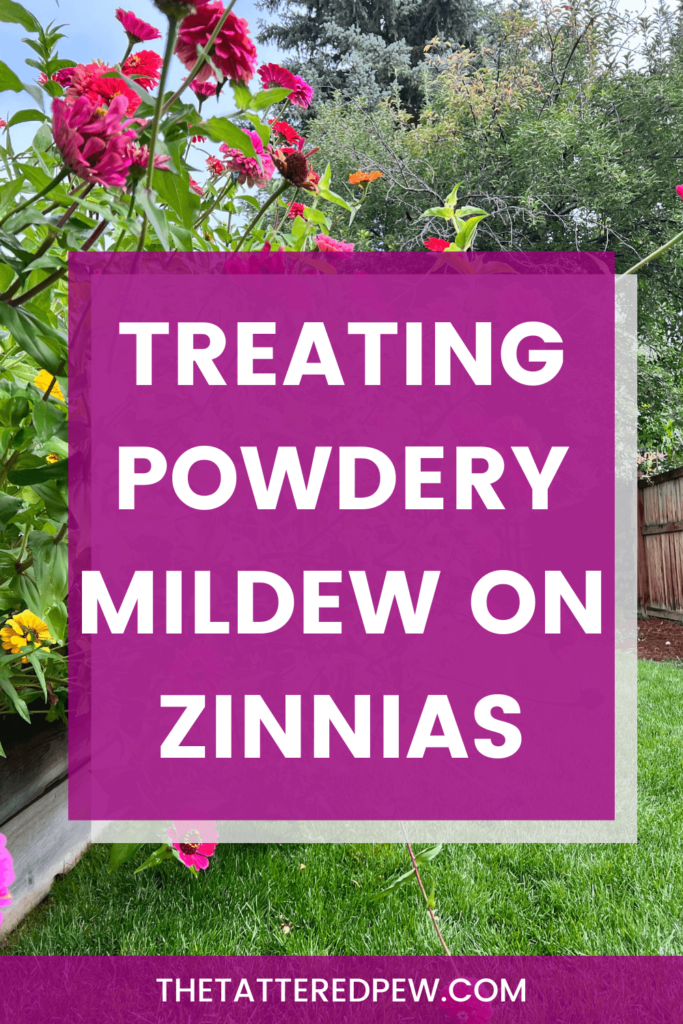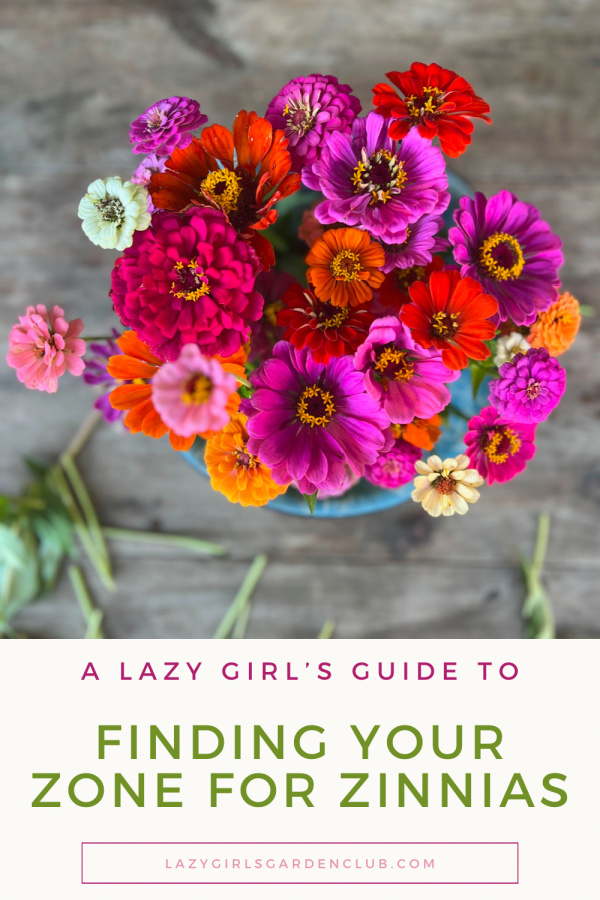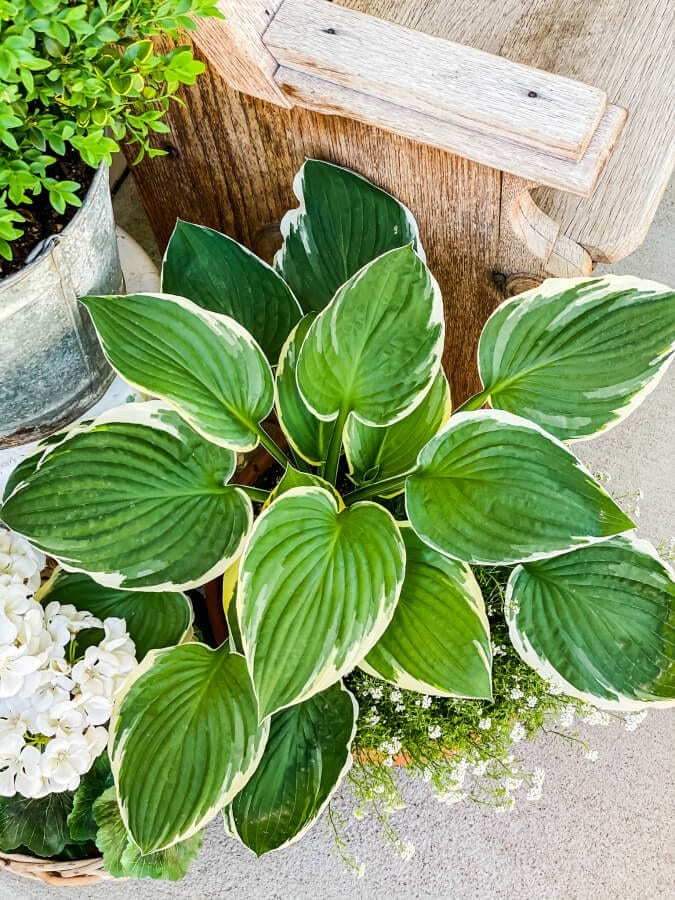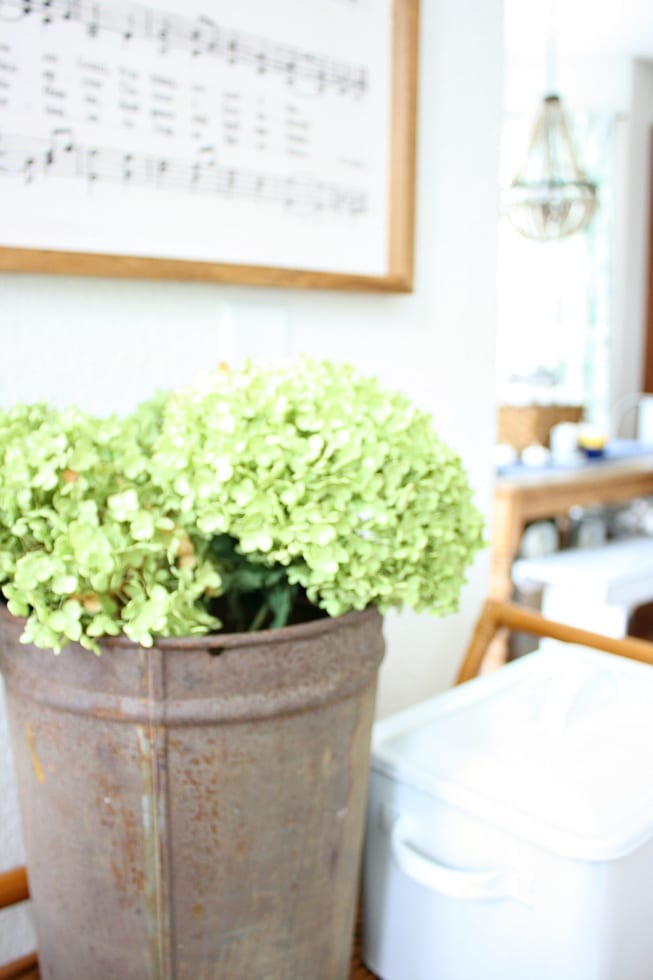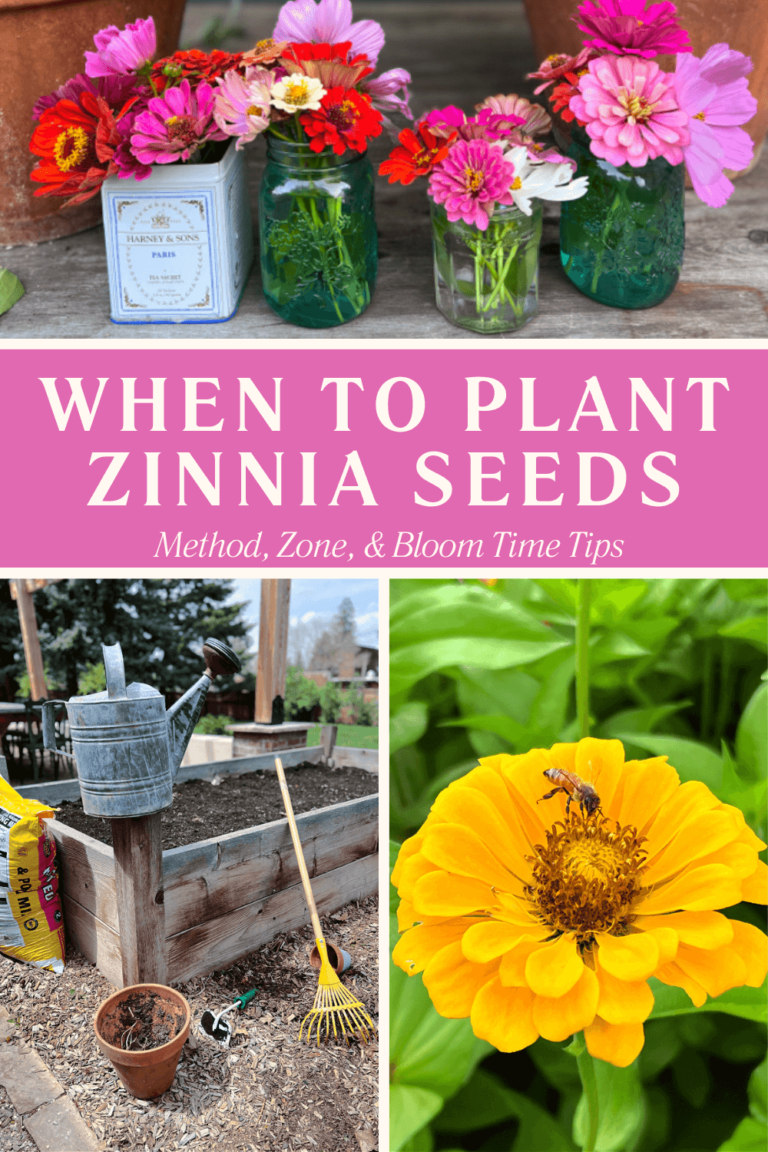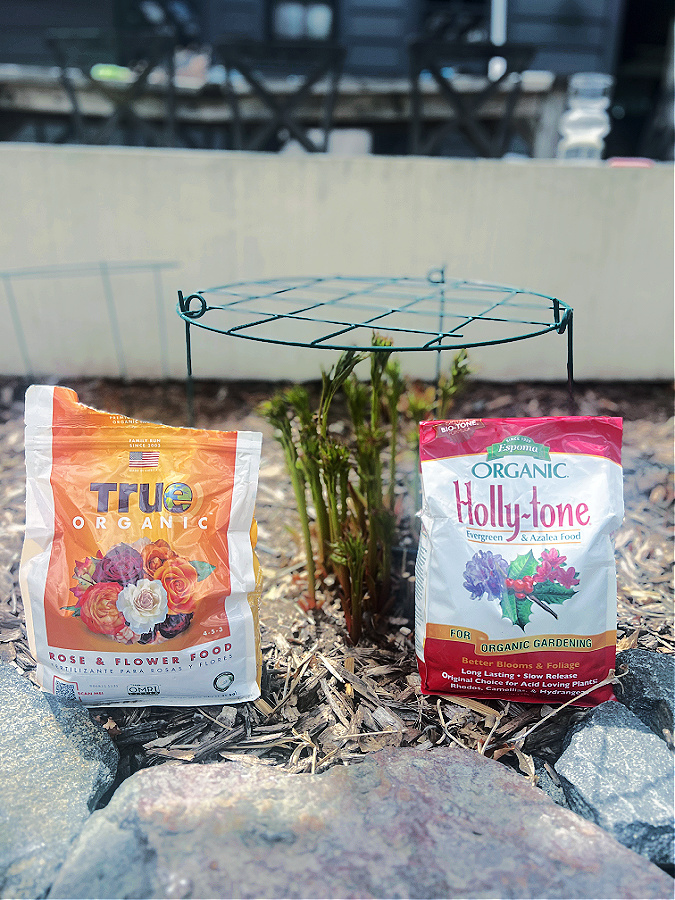Treating Powdery Mildew on Zinnias
Welcome, fellow gardener! As you may or may not know, zinnias are my favorite flower! Zinnias, with their vibrant hues and cheerful blooms, are a beloved addition to any garden. However, sometimes they can fall prey to the pesky nuisance known as powdery mildew. Fear not! In this guide, we’ll delve into the ins and outs of treating powdery mildew on zinnias, offering a comprehensive toolkit of eco-friendly remedies, proactive prevention strategies, and attentive care tips.
Join me as we explore effective methods to keep your zinnias healthy, vibrant, and free from powdery mildew’s grasp. Let’s dive in and cultivate flourishing gardens together!

*As an Amazon Associate, I earn from qualifying purchases. This post contains other affiliate links too for your convenience. Click here to read my full disclosure policy.
Disclaimer
Just to be clear, I am by no means a flower expert. I just love getting my hands dirty and sharing what works for me in hopes that it will work for you too. I encourage you to do zinnia research like I did (mainly on google and Pinterest) to see how they will best work for you and your garden zone. We live in northern Colorado which is zone 5b, but these tips work for all zones.
Treating Powdery Mildew on Zinnias
Here in Colorado I have only experienced powdery mildew on my zinnias towards the end of the season when the days were warm and the nights were cold. I have also had it on my peonies too. Because of this I wanted to figure out how to get rid of it as well as prevent it. And honestly, how to embrace it.
NOTE: This article from Clemson is one that I also reference all the time when I come to diseases, pests or unknowns on my zinnias! Bookmark it!
Ok, read on!
What Is Powdery Mildew?
Powdery mildew, a fungal scourge, can ruin the beauty of our beloved plants with its unsightly white powdery patches. It is typically started by warm, humid conditions, creating a challenge for gardeners.
Now, let’s turn our attention to zinnias, those delightful blooms cherished for their gorgeous hues. Sadly, even these flowers can fall victim to powdery mildew. When this happens, zinnias display a white to grayish coating on their leaves, signaling distress.
Beyond just seeing this gross white film, powdery mildew interferes and hurts the overall health of our zinnias. Swift action is essential to keep them happy.
Thankfully, there are strategies to combat powdery mildew. Attention is key; regular inspections of your zinnias and their leaves enable early detection.
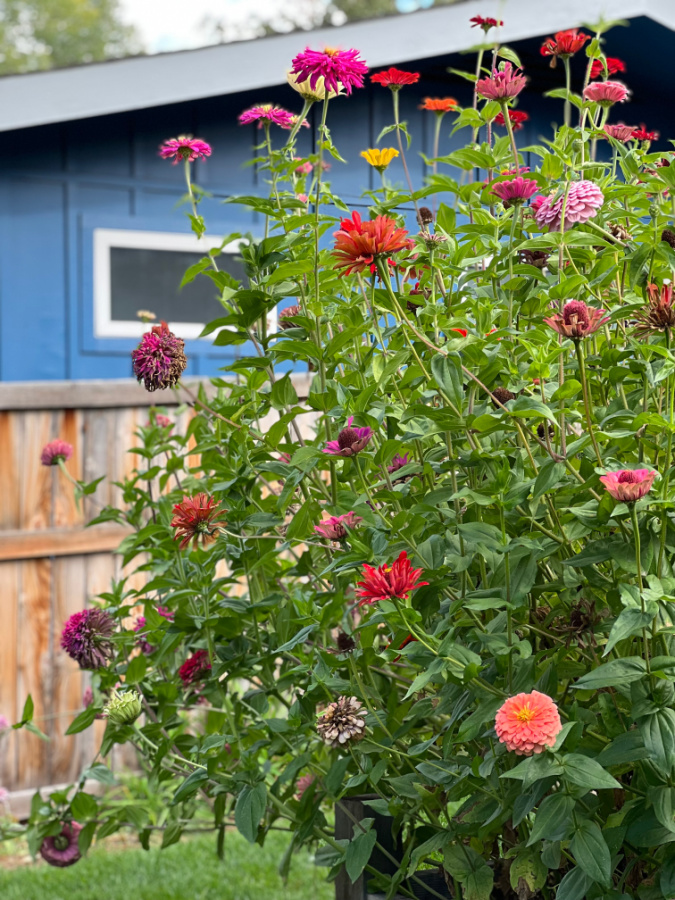
Opting for resistant zinnia varieties and optimizing plant spacing (which is where I struggles since I don’t space mine) to encourage air circulation are good measures. Also, the use of fungicidal treatments and sanitation practices help contain the spread of powdery mildew. I use THIS copper fungicide on mine.
By diligently implementing these techniques, we can safeguard the beauty and vitality of our cherished zinnias, ensuring they thrive in our gardens for seasons to come. Let’s chat about these!
Identifying Powdery Mildew on Zinnias:
Description of Powdery Mildew Symptoms on Zinnias:
- White Powdery Spots: One of the initial signs of powdery mildew on zinnias is the appearance of small, white powdery spots on the upper surfaces of leaves. These spots may start small but can rapidly spread across the leaf surface.
- Powdery Growth: As the infection progresses, the white spots coalesce, forming a powdery or dusty layer on the affected leaves. This powdery growth is composed of fungal spores and mycelium.
- Leaf Distortion: Infected zinnia leaves may exhibit distortion or curling along the edges. The presence of powdery mildew can cause leaves to become misshapen or twisted.
- Yellowing and Browning: As the disease advances, infected leaves may begin to yellow or brown, starting from the areas covered with powdery growth. Severe infections can lead to premature leaf drop.
- Stem Affection: In addition to leaves, powdery mildew can also affect zinnia stems, appearing as white powdery patches along their surfaces.
Comparison Images:
To aid in the early recognition of powdery mildew on zinnias, here are some comparison images:
- Healthy Zinnia Leaves
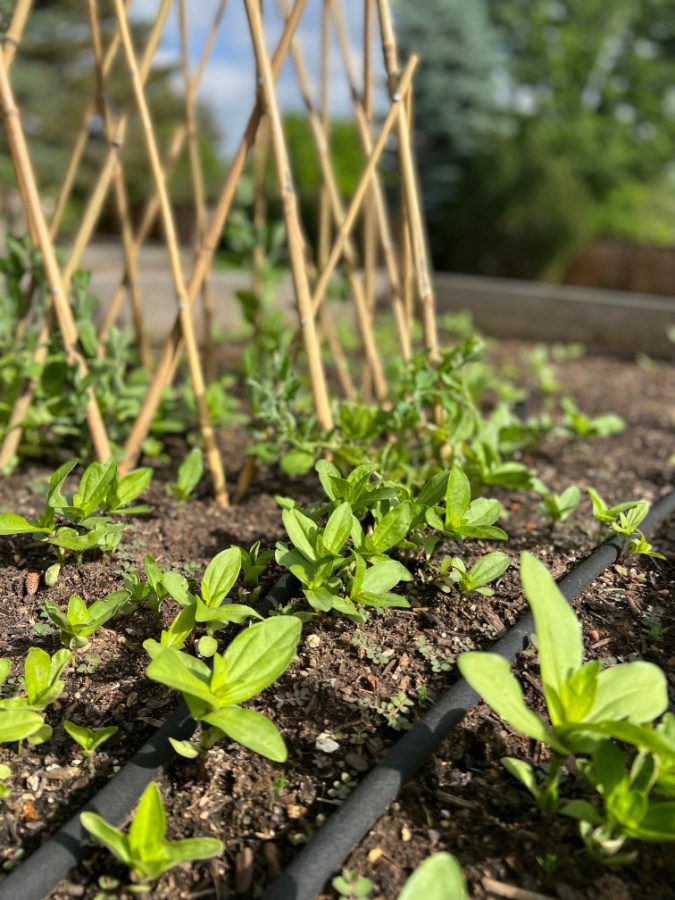
- Powdery Mildew Affected Leaves
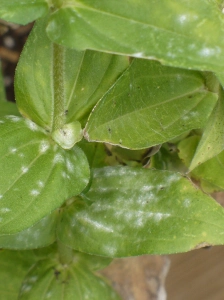
- Powdery Mildew spread to stems and leaves
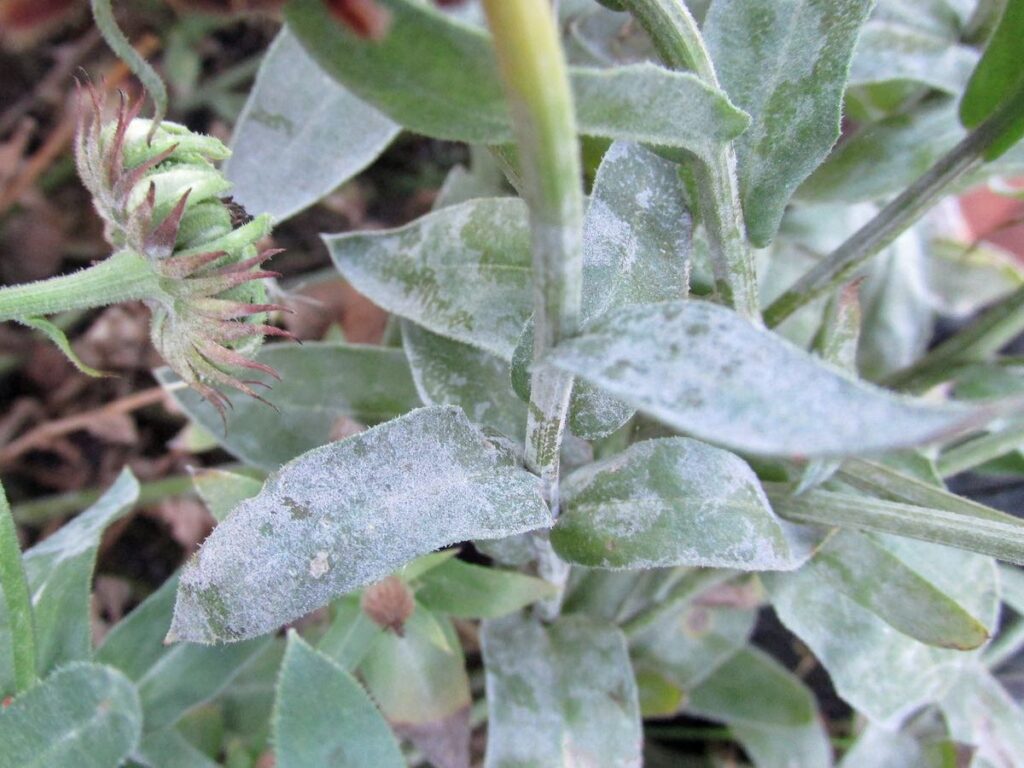
By familiarizing yourself with these visual cues and utilizing comparison images, you can promptly identify and address powdery mildew infestations, safeguarding the health and beauty of their zinnia plants.
What Causes Powdery Mildew on Zinnias?
Let’s delve into the causes and conditions conducive to powdery mildew development:
- Warm Temperatures: Powdery mildew thrives in warm climates, with optimal growth occurring between 60°F to 80°F (15°C to 27°C). These temperatures promote the rapid reproduction and spread of the fungus.
- High Humidity: Although powdery mildew can occur in both humid and dry conditions, it typically thrives in environments with high humidity. Excess moisture in the air provides an ideal environment for the germination and proliferation of powdery mildew spores.
- Poor Air Circulation: Inadequate air circulation around plants can contribute to the development of powdery mildew. Stagnant air allows moisture to accumulate on plant surfaces, creating a humid microclimate that favors fungal growth. Dense plantings, overcrowding, or planting in sheltered locations can exacerbate this issue. (However I do crowd my zinnias and typically don’t get mildew until the end of the growing season)
- Overhead Irrigation: Watering plants from above, especially during the evening or overnight, can increase humidity levels around the foliage and create conditions conducive to powdery mildew development. Damp leaves provide a suitable substrate for spore germination and fungal colonization.
- Plant Density: Planting susceptible species too closely together can create a crowded environment that impedes air circulation and traps humidity. This dense foliage provides ample surface area for powdery mildew to establish and spread.
- Susceptible Plant Species: Certain plant species are more susceptible to powdery mildew than others. Zinnias, roses, cucurbits (e.g., cucumbers, squash), and ornamental plants are commonly affected by powdery mildew. I have had it on my peonies too.
- Environmental Conditions: While powdery mildew can occur throughout the growing season, it tends to be more prevalent during periods of moderate temperatures and humidity. Extended periods of warm, dry weather followed by cool nights create favorable conditions for powdery mildew outbreaks.
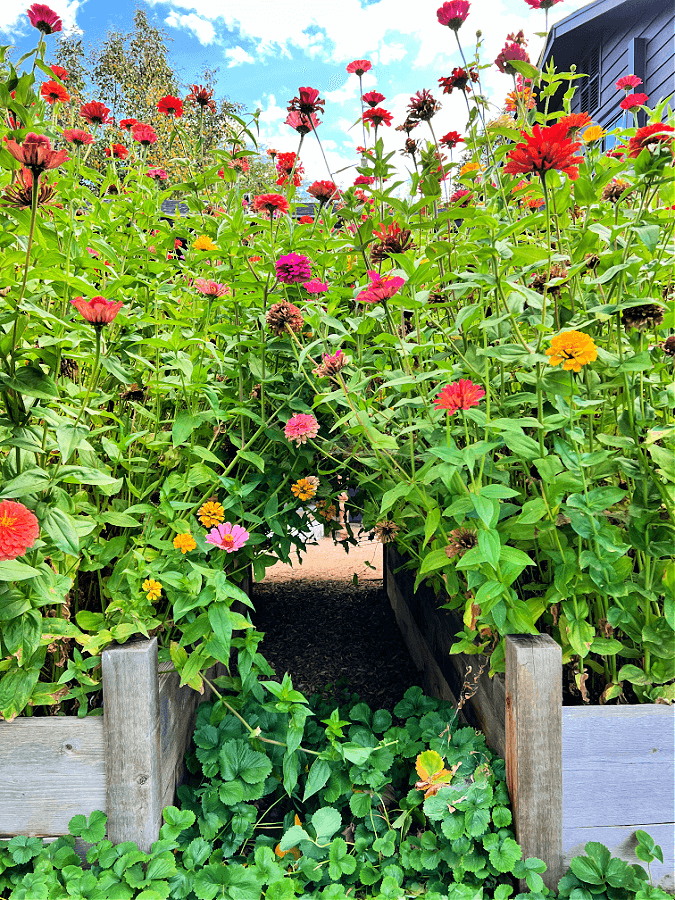
By understanding these causes and environmental factors conducive to powdery mildew development, gardeners can implement preventive measures and cultural practices to minimize the risk of infection and maintain plant health.
Strategies such as improving air circulation, avoiding overhead irrigation, and selecting resistant plant varieties can help mitigate the impact of powdery mildew in the garden.
Is Powdery Mildew Harmful?
Powdery mildew may seem like a mere cosmetic nuisance, but its effects can extend beyond the surface of plant leaves, ultimately impacting their health and vitality if you notice it early on. Here’s how powdery mildew can harm plants:
- Stunted Growth: As photosynthesis is compromised, affected plants may experience stunted growth. Without an adequate energy supply, plants may struggle to develop properly, resulting in smaller leaves, shorter stems, and overall diminished vigor. In severe cases, powdery mildew-infested plants may fail to reach their full potential or fail to produce flowers and fruits.
- Weakened Immune Response: Plants under stress from powdery mildew are more susceptible to other environmental stressors, pests, and diseases. The presence of powdery mildew can weaken the plant’s immune response, making it easier for secondary issues to invade and cause additional damage. This can lead to a vicious cycle of declining health and increased vulnerability to further infections.
- Premature Leaf Drop: Severe powdery mildew infections can lead to premature leaf drop. Infected leaves may yellow, brown, or curl, and eventually, they may wither and fall off prematurely. Loss of foliage reduces the plant’s ability to photosynthesize and can compromise its overall ability to thrive.
- Impact on Flowering and Fruit Production: Powdery mildew can also affect flowering and fruit production in susceptible plants. Infected flowers may fail to develop properly or drop prematurely, resulting in reduced yields or poor-quality fruits. This can be particularly problematic for fruit-bearing plants such as cucumbers, squash, and grapes.
So, while powdery mildew may not directly kill plants, it can significantly hurt their growth, weaken their immune defenses, and diminish their overall health and productivity.
Gardeners should take proactive measures to prevent and manage powdery mildew infections to ensure the well-being of their plants and maximize their yields and ornamental value.
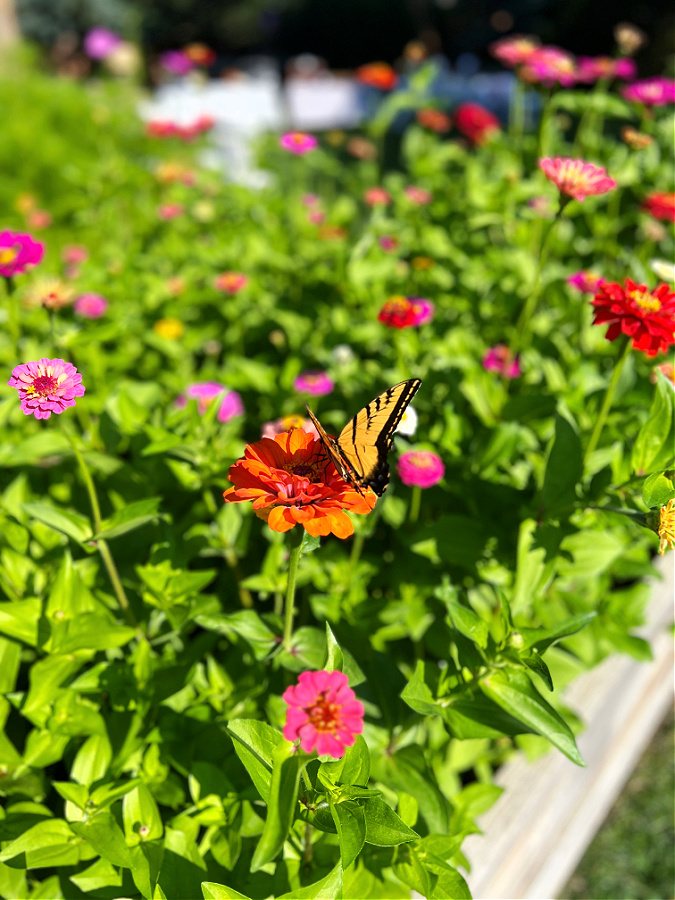
How to Prevent Powdery Mildew on Zinnias
Ok so let’s get in to some of the ways you can prevent powdery mildew on zinnias! And disclaimer I do not follow all of these listed below. These were just suggestions I found while researching. I do not space my zinnias like suggested. But I do water at their base. I say do what works for you and experiment as well!
- Proper Spacing of Zinnia Plants: Adequate spacing between zinnia plants is essential for promoting air circulation and reducing humidity around the foliage. When planting zinnias, ensure that they are spaced according to their mature size to prevent overcrowding. This spacing not only reduces the risk of powdery mildew but also allows each plant to access sufficient sunlight and nutrients for optimal growth.
- Providing Good Air Circulation: Good air circulation is crucial for minimizing the development and spread of powdery mildew. Plant zinnias in locations with ample airflow, avoiding dense plantings and sheltered areas where air movement may be restricted. Pruning overcrowded or overlapping foliage can also improve air circulation within the canopy, reducing humidity and minimizing fungal growth.
- Watering at the Base of the Plant, Avoiding Wetting Foliage: Watering zinnias at the base of the plant, directly onto the soil, helps prevent moisture from accumulating on the foliage. Wet leaves provide an ideal environment for powdery mildew spores to germinate and spread. Use a soaker hose (like me), drip irrigation system, or watering can to deliver water directly to the root zone, minimizing leaf wetness and reducing the risk of fungal infection.
- Mulching to Reduce Soil Splash: Applying a layer of organic mulch around zinnia plants helps conserve soil moisture, suppress weed growth, and prevent soil splash onto the foliage. Soil splash can inadvertently transfer fungal spores to the leaves, increasing the likelihood of powdery mildew infection. Mulching with materials such as straw, shredded bark, or compost creates a barrier between the soil and plant, minimizing the risk of fungal spread.
- Choosing Resistant Zinnia Varieties: Selecting zinnia varieties with natural resistance or tolerance to powdery mildew can significantly reduce the likelihood of infection. Many plant breeders have developed cultivars that exhibit improved disease resistance while retaining desirable characteristics such as flower color, size, and form. When purchasing zinnia seeds or transplants, look for varieties labeled as resistant to powdery mildew to enhance the plant’s ability to withstand fungal pressure.
- Remove affected areas & Clean Tools: If you spot any infected bits on your plants, get rid of them right away, along with any nearby debris. But remember, don’t toss them in the compost! And after each snip, make sure to clean your pruning tools with a mix of bleach and water (1 part bleach to 4 parts water) or you can use Prune Master!
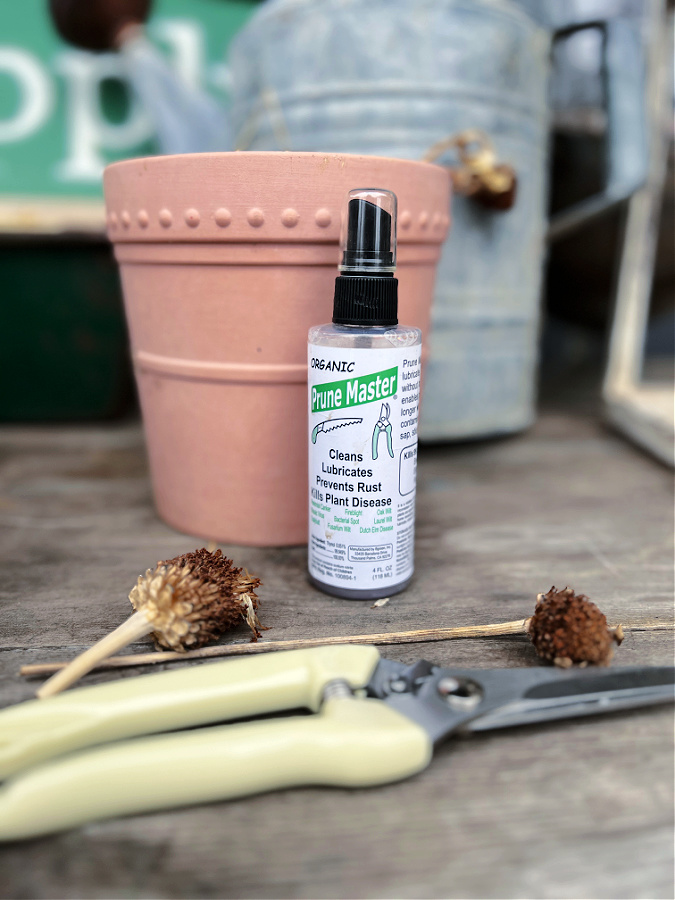
By implementing these practices, gardeners can create an environment that is less conducive to powdery mildew development, promoting the health and vitality of their zinnia plants and ensuring a beautiful display of flowers throughout the growing season.
Treating Powdery Mildew on Zinnias
Natural Remedies:
Here are some eco-friendly methods to control powdery mildew, along with recipes or application instructions for each remedy:
- Neem Oil Spray:
- Neem oil is a natural insecticide and fungicide derived from the seeds of the neem tree. It disrupts the growth and development of powdery mildew spores. ( I use this!)
- Recipe/Application: Mix 1 to 2 tablespoons of neem oil with 1 quart of water and a few drops of mild liquid soap (to help the oil mix with water). Shake well and spray the solution onto affected plant parts, ensuring thorough coverage. Apply every 7 to 14 days or as needed, especially after rain or irrigation.
- Baking Soda Solution:
- Baking soda (sodium bicarbonate) alters the pH of the leaf surface, creating conditions that are less favorable for powdery mildew growth.
- Recipe/Application: Mix 1 tablespoon of baking soda with 1 gallon of water and a few drops of mild liquid soap. Stir well to dissolve the baking soda and spray the solution onto affected plant foliage. Apply every 7 to 14 days, avoiding excessive use to prevent leaf burn.
- Milk Spray:
- Milk contains compounds that exhibit antifungal properties, making it effective against powdery mildew. (Several of my friends with zinnias swear by this method!)
- Recipe/Application: Mix 1 part milk (preferably skim milk) with 9 parts water to create a dilute milk solution. Spray the solution onto affected plant surfaces, ensuring thorough coverage. Apply every 7 to 14 days as a preventative measure or at the first signs of powdery mildew.
- Horticultural Oils:
- Horticultural oils, such as neem oil or jojoba oil, suffocate powdery mildew spores and disrupt their life cycle.
- Recipe/Application: Dilute the horticultural oil according to the manufacturer’s instructions and spray it onto affected plant parts. Ensure complete coverage of foliage, stems, and buds. Apply every 7 to 14 days, following label directions for frequency and concentration.
- Vinegar Solution:
- Vinegar has fungicidal properties that can help control powdery mildew.
- Recipe/Application: Mix 2 to 3 tablespoons of apple cider vinegar or white vinegar with 1 gallon of water. Add a few drops of mild liquid soap to help the solution adhere to plant surfaces. Stir well and spray onto affected areas, making sure to cover all surfaces. Apply every 7 to 14 days, taking care to avoid contact with sensitive plant tissues.
- Cease and MilStop: Erin from Floret uses this combo on her zinnias! These are both organic fungicides and she uses them every 7 to 20 days to keep powdery mildew away! I am excited to try this this year if I need it!
When using any of these eco-friendly methods, it’s important to test the solution on a small portion of the plant first to check for any adverse reactions.
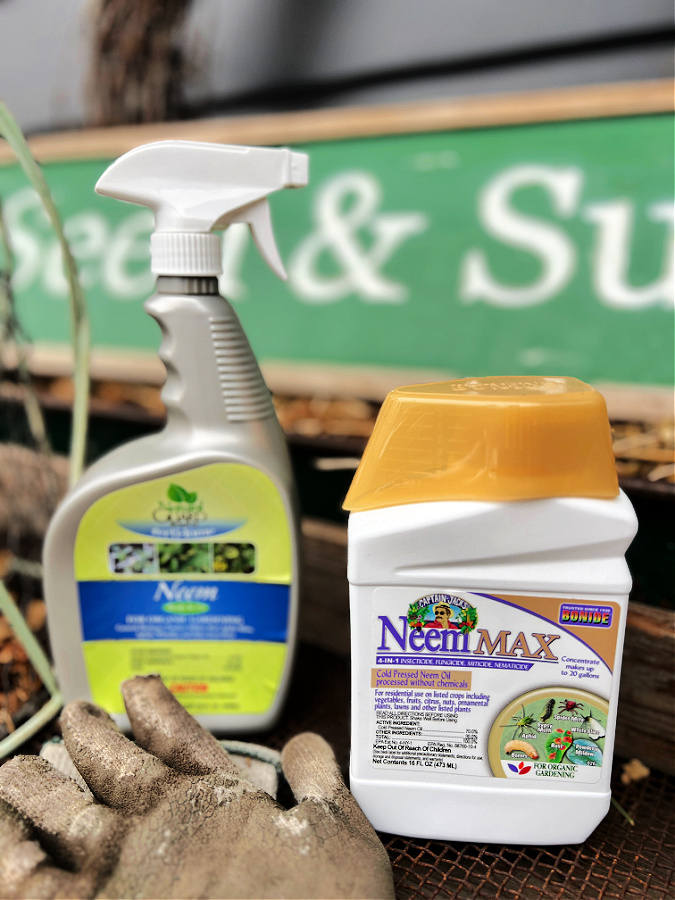
Additionally, apply treatments in the early morning or late afternoon to minimize the risk of leaf burn and to allow the solution to dry before nighttime. Consistent application and good cultural practices, such as proper spacing and sanitation, can enhance the effectiveness of these natural remedies in controlling powdery mildew.
Chemical Treatments:
Chemical fungicides should be considered as a last resort for controlling powdery mildew, especially in eco-friendly gardening practices. While they can be effective, they may also have environmental and health implications if not used properly. Here’s some guidance on their cautious use and proper application techniques:
- Last Resort Consideration:
- Chemical fungicides should only be used when alternative, eco-friendly methods have proven ineffective at managing powdery mildew. Exhaust all other options, such as cultural practices and natural remedies, before resorting to chemical treatments.
- Caution and Safety:
- Exercise caution when handling chemical fungicides, as they may contain potentially harmful ingredients. Read and follow all label instructions carefully, including safety precautions, application rates, and protective gear recommendations.
- Wear appropriate personal protective equipment (PPE), such as gloves, goggles, long sleeves, and a mask, to minimize exposure to chemicals during mixing and application.
- Proper Application Techniques:
- Apply chemical fungicides according to the manufacturer’s instructions, taking care to mix the product accurately and apply it evenly to affected plant parts.
- Use a calibrated sprayer to ensure accurate application and uniform coverage of foliage, stems, and buds. Avoid over-application, as this can lead to chemical runoff and environmental contamination.
- Choosing Products Safe for Edible Gardens:
- If zinnias are grown alongside edible plants, select chemical fungicides that are labeled as safe for use in vegetable gardens or on food crops. Look for products that have been approved for use on edible plants by regulatory agencies.
- Read the label carefully to ensure that the chemical fungicide is approved for use on the specific types of plants you are growing, including both ornamental and edible varieties.
- Integrated Pest Management (IPM) Approach:
- Incorporate chemical fungicides into an integrated pest management (IPM) strategy, which emphasizes a combination of preventive measures, cultural practices, biological controls, and chemical treatments as necessary.
- Monitor plants regularly for signs of powdery mildew and intervene promptly with the least toxic control method available. Rotate chemical fungicides with other control measures to minimize the risk of resistance development in fungal populations.
By approaching the use of chemical fungicides with caution, proper application techniques, and consideration for environmental and food safety concerns, gardeners can effectively manage powdery mildew while minimizing potential risks to themselves, their plants, and the surrounding ecosystem.
Cultural Practices:
Having proper sanitation practices are crucial for managing powdery mildew and preventing its spread. Here’s how to effectively implement these measures:
- Removing and Disposing of Infected Plant Parts:
- Regularly inspect plants for signs of powdery mildew, such as white powdery spots on leaves and stems. As soon as symptoms are observed, promptly remove and dispose of the affected plant parts.
- Use clean, sharp pruning shears or scissors to cut off infected foliage or stems. (I use Prune Master) Make sure to cut well below the affected area to remove all visible signs of powdery mildew.
- Place the removed plant parts in a plastic bag and seal it tightly before disposing of them in the trash. Do not compost infected plant debris, as this can potentially spread the fungal spores to other areas of the garden.
- Cleaning Gardening Tools to Prevent Spreading:
- After pruning or handling infected plants, thoroughly clean and sanitize gardening tools to prevent the spread of powdery mildew to healthy plants. Once again yay for Prune Master!
- Wash tools such as pruning shears, scissors, and garden knives with soap and water to remove any plant debris and fungal spores. Rinse them thoroughly and allow them to air dry before storing or using them again.
- Optionally, disinfect gardening tools by wiping them with a solution of 70% isopropyl alcohol or a diluted bleach solution (1 part bleach to 9 parts water). Allow the tools to air dry completely before using them on other plants.
- Proper Disposal of Infected Plant Debris:
- Dispose of infected plant debris responsibly to prevent the spread of powdery mildew and other plant diseases.
- Avoid composting infected plant material, as compost piles may not reach temperatures high enough to kill fungal spores. Instead, seal infected plant debris in plastic bags and dispose of them in the trash.
- Practice good garden hygiene by regularly cleaning up fallen leaves, plant debris, and weeds from the garden bed to reduce potential sources of fungal inoculum and minimize disease pressure.
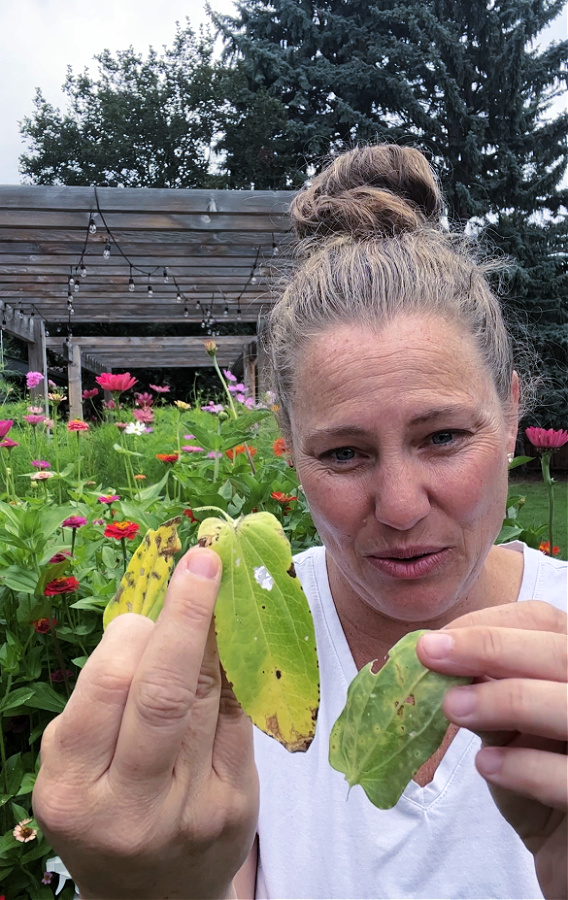
Types of Zinnias that Are Mildew Resistant
While no plant is completely immune to powdery mildew, there are zinnia varieties known for their increased resistance to this yucky disease. Here are a few zinnia cultivars that are reputed to exhibit good resistance to powdery mildew:
- ‘Profusion’ Series: The ‘Profusion’ series, including varieties like ‘Profusion Orange’, ‘Profusion Cherry’, and ‘Profusion Double Hot Cherry’, are known for their compact growth habit, continuous flowering, and resistance to powdery mildew. These zinnias are excellent choices for landscape bedding, containers, and borders.
- ‘Zahara’ Series: The ‘Zahara’ series, such as ‘Zahara Yellow’, ‘Zahara Coral Rose’, and ‘Zahara Fire’, are renowned for their disease resistance, including resistance to powdery mildew. These zinnias boast vibrant colors, sturdy stems, and excellent garden performance. Great for growing in containers too!
- ‘Dreamland’ Series: The ‘Dreamland’ series features large, fully double flowers and robust plants with good resistance to powdery mildew. Varieties like ‘Dreamland Coral’, ‘Dreamland Mix’, and ‘Dreamland Red’ are popular choices for bedding displays and cut flower arrangements.
- ‘Queen’ Series: The ‘Queen’ series offers a range of colors and flower forms, including single, double, and semi-double blooms. ‘Queen Lime Orange’, ‘Queen Red Lime’, and ‘Queen Lime with Blotch’ are notable for their resistance to powdery mildew and striking bicolor flowers.
When selecting zinnia seeds labeled as mildew resistant, it’s essential to choose reputable suppliers and read product descriptions carefully.
By choosing resistant varieties and implementing preventive measures, you can minimize the risk of powdery mildew and enjoy healthy, beautiful zinnia blooms throughout the growing season.
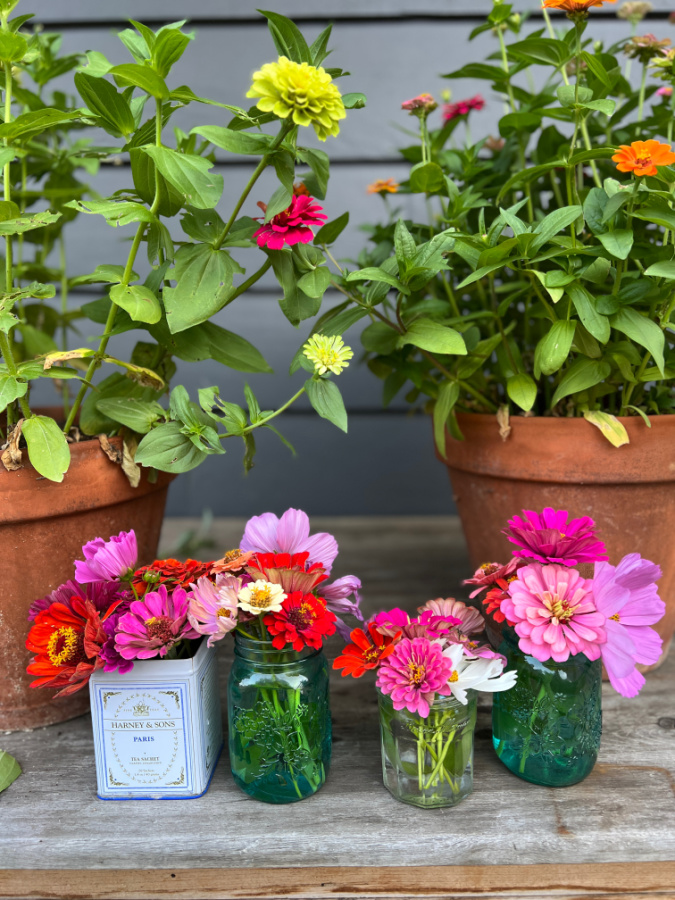
Common Questions About Getting Rid of Powdery Mildew
What is the best treatment for powdery mildew?
The best treatment for powdery mildew depends on the severity of the infection and the type of plants affected. Common treatments include fungicidal sprays containing sulfur, potassium bicarbonate, neem oil, or horticultural oils. Additionally, cultural practices such as pruning to improve air circulation and removing infected plant parts can help manage powdery mildew.
Can plants recover from powdery mildew?
Plants can recover from powdery mildew with proper treatment and care. Early detection and intervention increase the chances of recovery. Removing infected plant parts, improving air circulation, and applying appropriate fungicidal treatments can help plants overcome powdery mildew.
Does overwatering cause powdery mildew?
Overwatering can create conditions favorable for powdery mildew development, but it is not the direct cause of the disease. Powdery mildew thrives in humid environments with poor air circulation. Overwatering can lead to excessive moisture on plant surfaces, providing an ideal environment for powdery mildew spores to germinate and spread.
What happens if you don’t treat powdery mildew?
If left untreated, powdery mildew can weaken plants, reduce their overall health and vigor, and potentially lead to defoliation or death, especially in severe cases. Additionally, the spread of powdery mildew to nearby plants can happen.
Does powdery mildew come back every year?
Powdery mildew can come back every year, especially if environmental conditions remain favorable for its development. Spores of the fungus can overwinter in plant debris or soil and reemerge when conditions such as high humidity and moderate temperatures occur. Proper management practices, including sanitation, pruning, and fungicidal treatments, can help reduce the likelihood of powdery mildew recurrence.
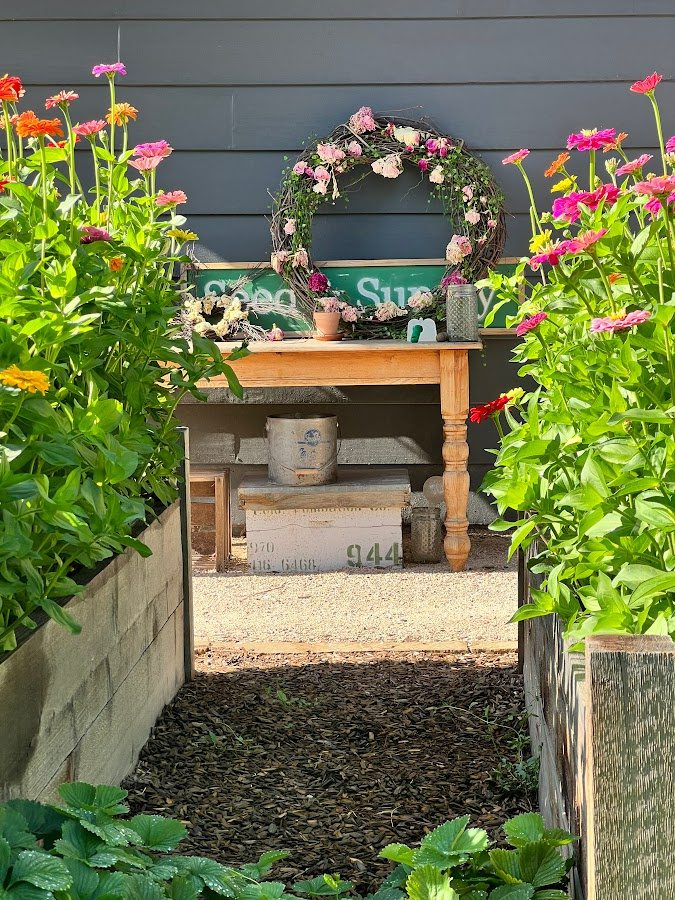
Need Help With Powdery Mildew on Zinnias?
To keep powdery mildew at bay on your zinnias, proactive measures are key.
Offer your zinnias attentive care, including regular monitoring for signs of powdery mildew, watering at the base of the plant, and mulching to reduce soil splash. With these practices in place, your zinnias can thrive, displaying vibrant blooms throughout the season. Join the conversation by sharing your experiences and additional tips in the comments section below. Together, we can support each other in cultivating healthy and beautiful gardens!
More Zinnia Resources
- Visit my Zinnia resource page the lazygirlsgardenclub.com
- My FREE Zinnia Zone Guide (to know when to plant)
- Grab my Lazy Girl’s Garden Guide to Growing Zinnias E-Book!
- How to Make Zinnias Bloom More : A Beginners Guide to Pinching & Deadheading
- Lazy Girl Tips for Growing Zinnias In Pots
I’d love to have you hang out with me some more! Feel free to follow along with me on any of the platforms linked below.
LTK | Facebook | Instagram | Pinterest | Amazon
xoxo,
Kelly
Did you like this post? PIN it for later!
